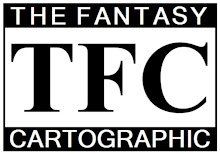(Most of this post was actually written back in March 2009, so please forgive the obviously dated comments.)
Fairly shortly, we are going to release Fantasy Class: Martialist, a GSL compatible product for use with the 4th Edition. Somewhat foolishly, we had decided that we wanted to release a new character class for the game. Following a lot of time and effort, FC:M hit the streets. I have to say that it was the single most difficult project that TFC has atttempted to date, but we wanted to attempt it. Why a character class? Already there are several products out that detail new races. There are several products out that detail new paragon paths. Same with magic items. Same with adventures. There are fewer that describe new monsters for 4E, but they're out there with more on the way. What does that leave? New character classes.
In that category are the Advanced Players Guide by Ari Marmell, Fang, Fist, and Song by Goodman Games, Secrets of Necromancy by Zodiac Gods Publishing, and, only in the very recent past, The Witchdoctor by One Bad Egg. (There might be one or two others out there, but those are the only ones of which I am aware. If you know of others, please comment here.)
Designing the class was difficult for us, but it is an inherently difficult process in general. Why this is so should be obvious to anyone who knows the 4E system: character classes demand a lot from a game designer--especially if one wants to be taken seriously by the gaming community.
So, what does it demand? IMHO, the following:
- Something new. The character class is the fundamental method by which a player interacts with the world. Players like to do things that they haven't done before, or things differently than they've done before. One of the great successes (depending on to whom you speak) of 3E was the vast array of options it gave to the players--both "official" material from WotC, and 3rd party stuff from Malhavoc and others. But a class has to be "new"--otherwise why deviate from the core? "New" can mean different things to different people, but "new" is key.
- Good fluff. A key aspect of new-ness is the flavor describing the class. Even for the core classes, flavor sets the tone for the player. Glancing through the PHB, a player will read the flavor before slogging through endless descriptions of powers. If the flavor doesn't speak to him, doesn't inspire him or excite him, he's probably not going to decide to play that class. Flavor (fluff) speaks to our heart while crunch (mechanics) speaks to our intellect.
- Interesting class features. Other than the powers (which I'll get to below), what makes the class different than the others? Would a fighter be a fighter without his ability to mark opponents? Would a paladin or cleric be a paladin or cleric without their channel divinity abilities? Obviously, not. Class features fundamentally determine the nature of a class--they are the core of each class. Given the amount of customization possible when choosing powers, the class features provide the constant across all members of that class.
- Powers. Whole blog posts could be written (and in some cases have been written) about powers in 4E. I'll try to keep it short. At the least (and in no particular order), powers must be useful, varied, interesting, balanced, match the fluff of the class, and support its ability to do what it is supposed to do. Balanced--both across the class and across the classes. Balance is hard--incredibly hard.
I believe that powers are what makes class creation the most difficult task for would-be 4E game designers. Without a doubt.
(The rest of the post was written in early January 2010.)
So why did we start our foray into 4E publishing with a character class? Well, frankly, because we had no idea just how difficult it would be. Looking back, I'm glad that we did it. We learned a lot about the 4E, but we also learned a lot about producing a quality product. We are very proud of how it looks, as well as how it plays.
Sunday, January 17, 2010
Subscribe to:
Post Comments (Atom)








No comments:
Post a Comment